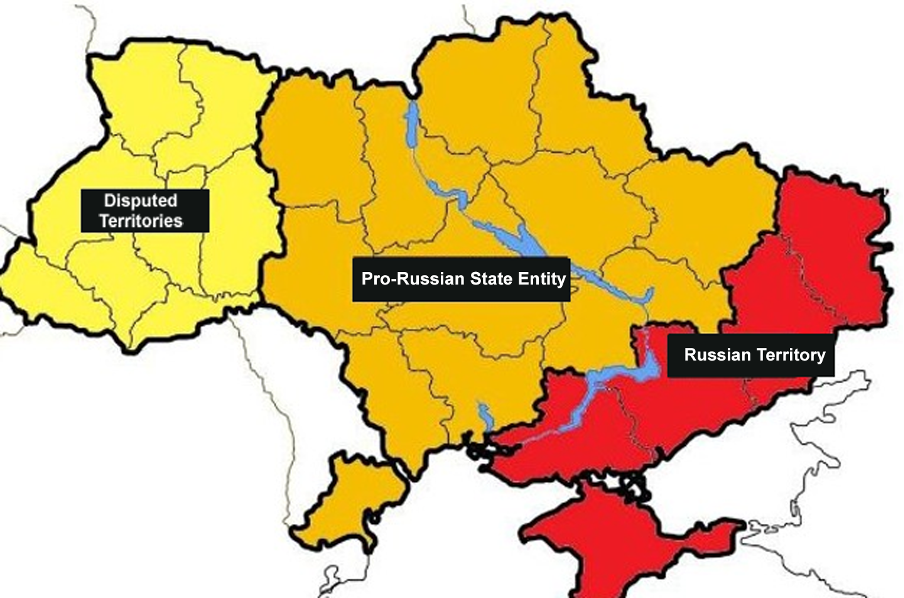NATO has deployed state-of-the-art Airborne Warning and Control System (AWACS) air reconnaissance aircraft to the alliance’s eastern tier to monitor Russian military operations and for better observation and defense of Romanian air space, an official statement said.
The flights “will take place solely over Alliance territory and will operate out of Preveza air base in Greece and the NATO AWACS main base at Geilenkirchen…(and will) strengthen Romania’s ability to respond to the increased air activity in the vicinity of its border. This enhanced vigilance activity is legitimate, defensive, proportionate and fully transparent,” the Sept. 30 announcement said.
JOIN US ON TELEGRAM
Follow our coverage of the war on the @Kyivpost_official.
The US-developed Boeing E-3A Sentry AWACS plane is by most accounts the world’s premier air reconnaissance platform, with radars capable of spotting aircraft-sized flying objects at ranges of hundreds of kilometers. On-board electronics and up to 19 aircrew process everything from pilot voice intercepts to ground missile launches to radar emissions spotted by the plane’s sensors, to give a commander cross-spectrum air battle intelligence.
The NATO decision came after repeated violations of Romanian air space by Russian kamikaze drones most likely intended to attack Ukrainian homes or businesses in strikes in August and September, that flew into NATO air space, and in a few cases, dove in to detonate on Romanian territory.

Will They Deserve to Even be Called “Negotiations”?
Open-source flight tracking data reviewed by Kyiv Post showed E-3 Sentry aircraft patrolling over most of the length of Romania’s Black Sea coast on Sept. 30, Oct. 1 and Oct. 2. The planes flew to sector from the Preveza air base in Greece, and the NATO AWACS main base at Geilenkirchen, that data showed.
Air space over eastern Romania sees daily patrols by US Navy Poseidon sea search aircraft flying most often from Sicily or Greece, and overflights two or three times a week by RC-135 electronic sniffer reconnaissance aircraft, almost always from Royal Air Force bases in Britain.
The commitment of a $270 million E-3A Sentry, by most measures NATO’s most capable air reconnaissance platform, to air space on the borders of the Russo-Ukrainian War has been rare.
Prior to the Sept. 30-Oct. 2 flurry of flights, the last time NATO had sent an AWACS into Romanian air space was on Sept. 5, and prior to that on Aug. 22, data published by the air traffic monitoring group FlightTracker showed.
On Wednesday, four days into the announcement intensified AWACS monitoring of NATO’s southeastern tier, civilian air traffic platforms showed a Dutch E-3A Sentry with the tail identifier LC-N90453 had lifted off at 11:30 a.m. from Geilenkirchen and was heading east. It showed up in Romanian air space at about 3 p.m.
NATO, in past weeks and months has used its long-legged AWACS for patrols along practically its entire eastern frontier, as well as ranging through air space approaches to Iceland, and in the eastern Mediterranean between Crete and Cyprus.
Based on open-source flight tracking data, those patrols over the summer took place every three or four days. A four-day-in-a-row sortie rate, as took place from Sept. 30-Oct. 3 is, by that data, practically unprecedented for peacetime NATO air operations.
The uptick in NATO-run AWACS sorties to Romanian air space in late September came slightly more than three months after the United States Air Force stopped reconnaissance missions using Global Hawk surveillance drone over the length of the Black Sea, on the edge of claimed Russian air space around the Crimea peninsula and at times approaching to as close as 130 kilometers (81 miles) from the Russian Federation’s Black Sea coast.
The last Global Hawk flight over the Black Sea was, per open-source data, on June 24. Some Russian milbloggers at the time linked the curtailment of US Global Hawk missions deep into Black Sea air space with an officially acknowledged June 25 telephone conversation between US Defense Secretary Lloyd Austin and then newly appointed Russian Defense Minister Andrei Belousov.
Neither Moscow nor Washington made public the subjects that were discussed.
According to the civilian-military Ukrainian air traffic information platform “Tracking,” Russian Air Force planners are possibly redeploying Tu-95MS strategic bombers (NATO designator “BEAR”) in preparation for a major missile strike against targets in Ukraine.
Were a NATO AWACS to be in the air over Romania at the time of a Russian strike, its sensors would almost certainly spot every aircraft, kamikaze drone and missile incoming on Ukraine.
In the lead-up to past major Russian missile strikes on Ukraine, Kremlin air planners appear to have concentrated bombers with newly manufactured cruise missiles at Engels-2 air base, near the central Russian city Saratov. The last heavy Russian missile/kamikaze drone strike, the biggest of the war so far, with 100 missiles and 101 drones, hit Ukraine on Aug. 26th.
As of Saturday, six Tu-95MS bombers were at Engels-2, eight were at Olenya base near Murmansk, and four were at Dyagilevo base near Ryazan, Tracking reported. Kyiv Post was unable to confirm the report independently.
You can also highlight the text and press Ctrl + Enter






